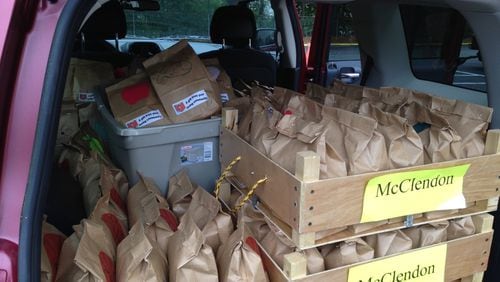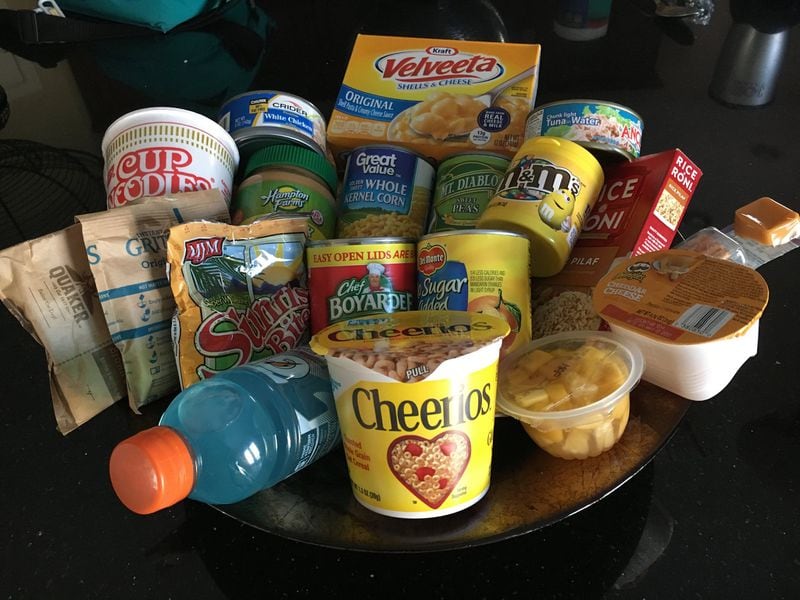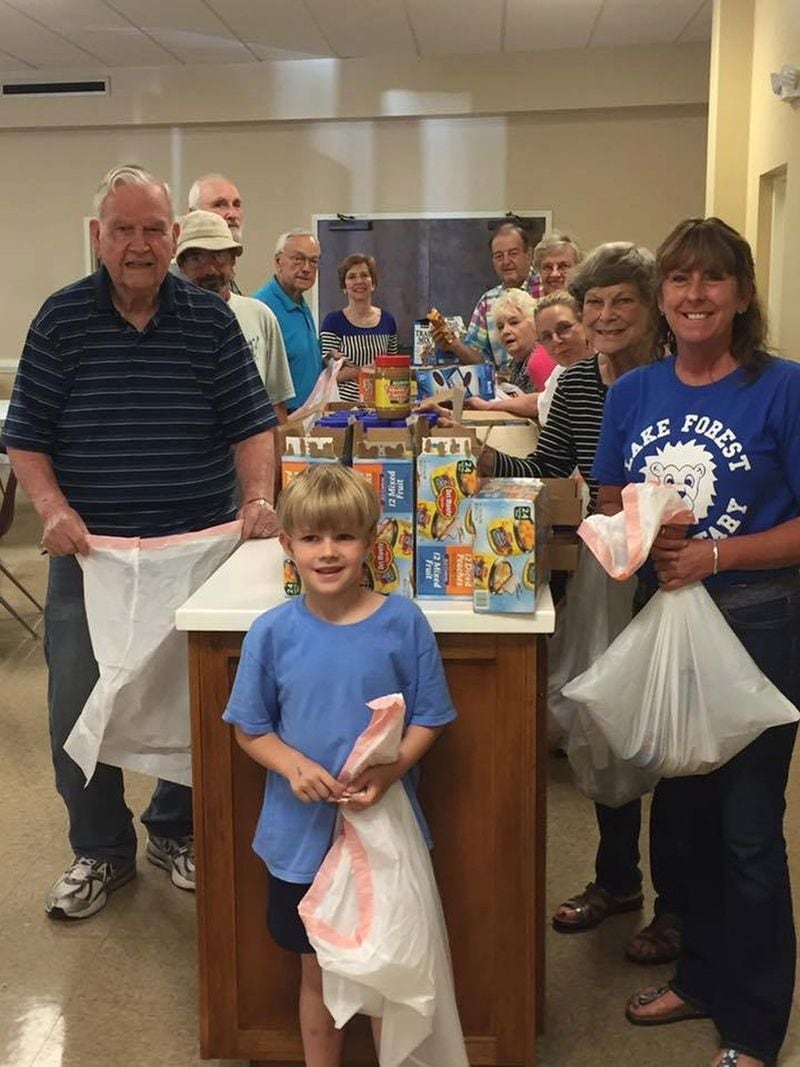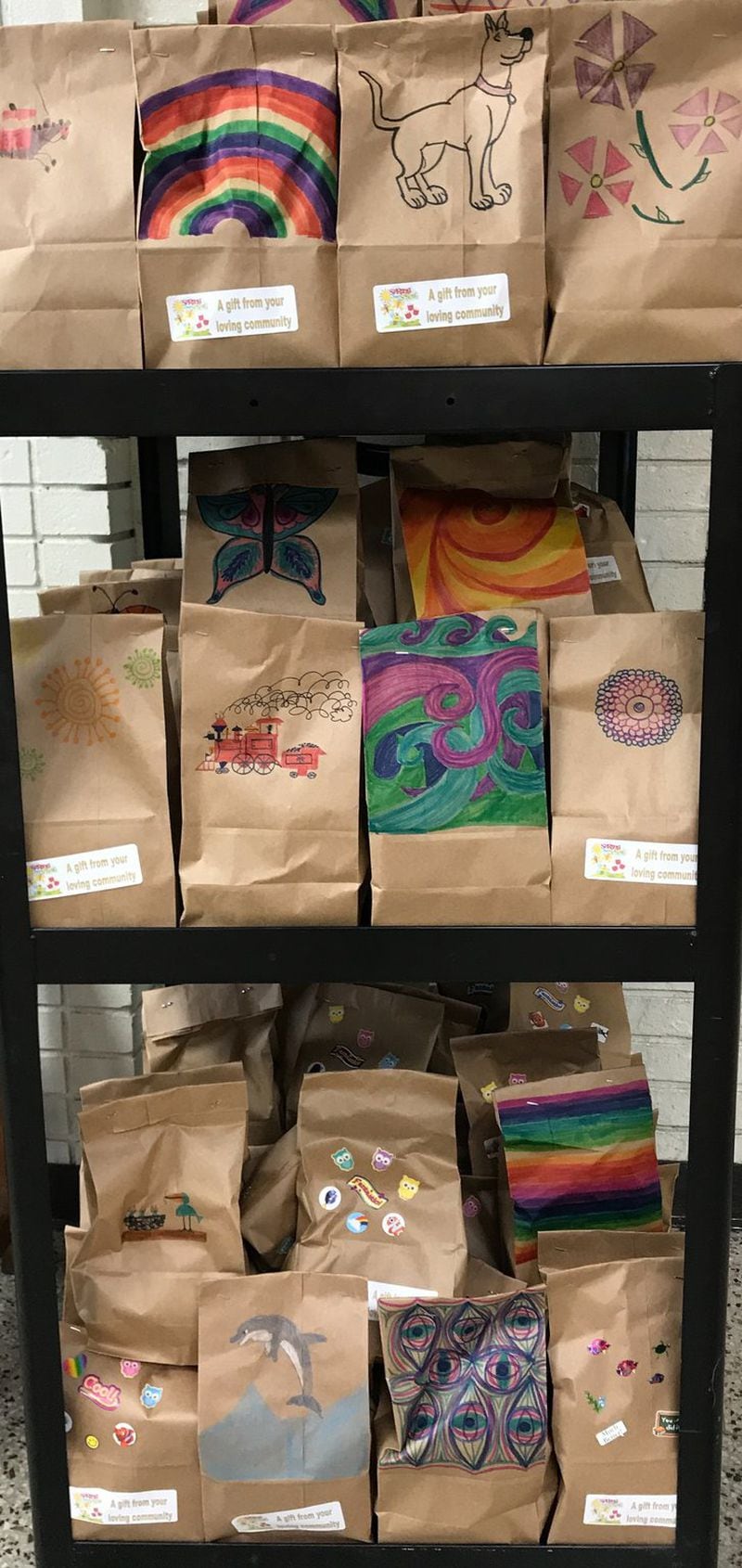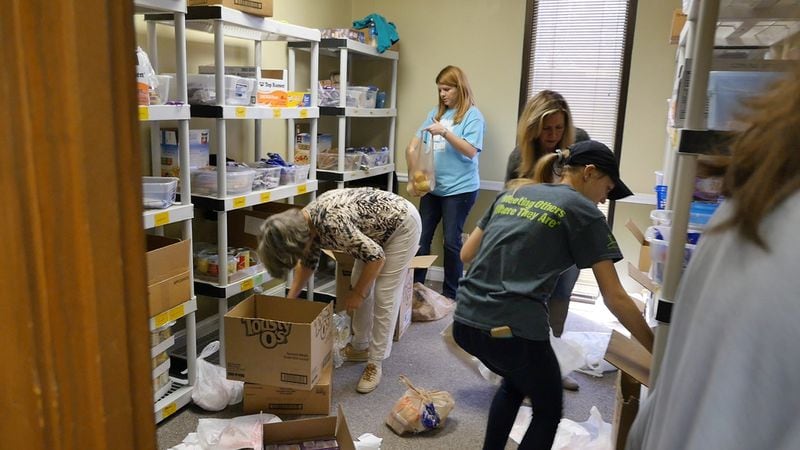Hunger is a daily fact of life for many Georgia school-age children. While the beginning of the school year finds some groups filling backpacks with school supplies, others work from September to May filling backpacks and sacks with food.
"In this day and age, in our country, it's just plain wrong that there are people who are food insecure, that there are children who might not eat between lunch at school on Friday and breakfast at school on Monday," says Judy Campbell, part of the Snax Sax program at Embry Hills United Methodist Church in DeKalb County.
There are many groups organizing volunteers to do this work all across metro Atlanta. Hunger is not in pockets in our community. It is everywhere.
The programs share a basic structure. Each Wednesday, volunteers gather to put together backpacks or bags of food. On Thursdays, the food is delivered to schools, and on Fridays, teachers distribute the bags to the children. In every case, schools are responsible for choosing the students to participate in the programs, and parents provide consent.
Teachers see hunger every day. Kathy Keeton of Sandy Springs United Methodist Church has retired from teaching, but she remembers the need. "I would hear firsthand from social workers who made home visits and would open the refrigerator to find only beer or soft drinks. I would see the kids come to school and know that the breakfast and lunch they got there were probably the only decent meals they were getting."
Of course, it's not only teachers who see the need. Returning to the States after working in Africa, Veronica Mount started College Park-based Land of Promise and its Nourish the Need program. "Over there, you can see hunger. Here, in most circumstances, hunger is invisible," Mount says.
Starting with a shoestring budget, she began attending community meetings and explaining that there were hungry children all around. Today Nourish the Need serves children in 14 schools in both the south and north ends of Fulton County. Last year, they provided bags of food for 348 children, from kindergartners to high schoolers. When a child is identified by his or her school, Mount will find out if the family has other children who might also need food. “It’s important to us to make sure we’re feeding all the children in the family.”
Jacqueline Beard-Cathey, coordinator of social work services for Fulton County Schools, says, “We are grateful for the help these organizations provide. Our parents are stretching their funds as best they can, and they, too, are grateful for the food support. There are pockets of economic need everywhere in our county.”
Last year, the backpack program at Sandy Springs United Methodist Church served 200 students at three schools, including Riverwood High School. Bruce Donnelly is executive director of the program and a recent retiree from the Atlanta Community Food Bank. “Because of what I know from my years of work at the food bank, I wanted to be sure we put some really healthy food in the packs, enough to serve a whole family at least one meal. Maybe they have brothers or sisters or a single mom. We always include fresh fruit, and we go to the food bank for more staple items such as stews, soups and individual servings of cereal.”
Maurice Richardson is one of Sandy Springs UMC’s steadfast volunteers. “It takes us about an hour. We lay all the food out on long tables, and then we walk along putting each item in the sack. We come together because we enjoy doing something for needy kids and needy families.”
Kids return their backpacks to school on Mondays and Tuesdays, and Donnelly goes around to pick them up and start the process of packing all over again.
Along with Christie Maloch, LeyAnna Messick manages the Snax Sax for Kids program at Embry Hills United Methodist Church. Last school year, they served 361 children a week, delivering 11,559 bags between September and May. “We try to send healthy food. We make sure they get a piece of fresh fruit and some juice,” Messick says.
Last year, the church tested the idea of putting fresh vegetables in the bags along with a simple recipe. The vegetables came from the Atlanta Community Food Bank. The response was good, so they hope to do more of that this year.
On Wednesdays, a dedicated group of packers show up at the church. This year, they added a Facebook page for the program, and that brought in more community help such as a Girl Scout troop from Tucker and students from Lakeside, Marist and St. Pius high schools. Children have taken on the bags as an art project, decorating them with colorful art and stickers.
Wayne Reid helps out each week. “The food is in bins and packers go down the line taking an item from each bin to fill a bag. Then the bags are stapled and put into crates for delivery to the schools.” He sees the short-term benefit of feeding children, but hopes there’s a long-term benefit as well. “Ideally, when they’re older, they will recall what receiving those bags of food meant to them, and that might inspire them to do something for others.”
In 2010, Scarlett Rigsby of Nothing but the Truth met with a counselor at a Gwinnett County Title I school to see if there was a need for weekend meals. Indeed there was. "We started our weekend food ministry with one school and 15 students. Today we serve 36 schools and almost 800 kids every week, and that includes schools in Gwinnett, Clayton and Barrow counties, but it's just the tip of the need."
The food they pack into plastic grocery-type bags is food that children can fix for themselves. School counselors put the bags into the children’s own backpacks. “It’s more discreet and provides some anonymity for the kids,” Rigsby says.
Rigsby knows there are hungry children everywhere. “We have to educate people on what it looks like to be homeless in a suburban area. We have families that are doubling up with families or friends, or living in extended stay hotels. The average age of a homeless person in Gwinnett is 6 years old. Six. These are the vulnerable children we want to serve.”
“How can we expect students to come to school prepared to learn and achieve if they are hungry?” asks Fulton County Schools’ Beard-Cathey.
That’s what these groups are working to overcome. “If we can eliminate that one small barrier — hunger — then kids have a chance to be productive in school and in the community,” Rigsby says.
All these programs are anonymous. The volunteers never meet the children, and the children don’t know who put together the bags. But the children see that someone cares.
Campbell with the Embry Hills UMC program says, “Every bag always includes a label which says, ‘A gift from your loving community,’ so the children receiving the bags know people in their community love them.”
CHILDHOOD HUNGER IN GEORGIA
- Georgia is tied with Arizona for the eighth-highest child poverty rate in the United States.
- Almost 1 in 4 children in Georgia don't have enough food to eat. In the 29 counties served by the Atlanta Community Food Bank, 1 in 5 children are food insecure, living in a household with limited or uncertain access to adequate food.
- Nearly 63 percent of children in Georgia's public schools are eligible for the free and reduced lunch programs, but only 17 percent have access to lunch during the summer when school lets out.
Source: Atlanta Community Food Bank
FOR MORE INFORMATION
To contact the programs in this story:
Sandy Springs United Methodist Church: https://ssumc.org/
Land of Promise: http://lopprograms.org
Embry Hills United Methodist Church: http://embryhillsumc.org
Nothing but the Truth: http://nothingbutthetruth146.org/
About the Author
